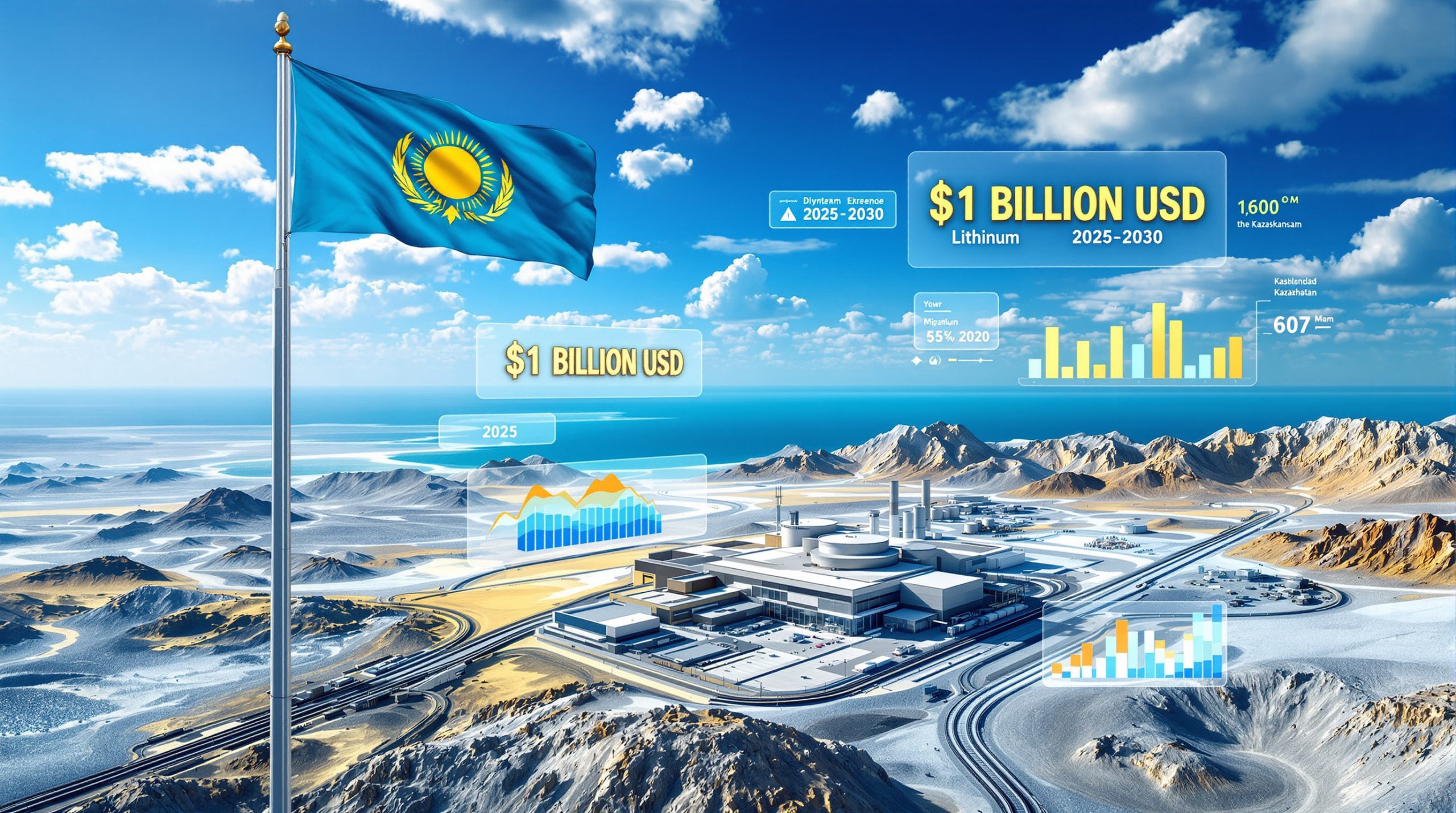What Is the Current State of the EMM Market?
The Electrolytic Manganese Metal (EMM) market continues to demonstrate remarkable stability as we move through mid-2025. According to the latest SMM (Shanghai Metal Market) data, average spot prices in major producing areas remain steady at 13,400-13,500 yuan/mt, showing no month-over-month change. Similarly, FOB prices have held firm at $1,870-$1,910/mt, maintaining consistent export valuations despite fluctuations in other metal markets.
This price stability represents a notable achievement in the current volatile commodities landscape. EMM producers have successfully maintained pricing discipline, with no significant discounting observed despite uncertain demand signals. This suggests a well-coordinated supply side with aligned cost structures and production strategies.
EMM Price Stability Overview
The consistent pricing observed across China's major EMM producing regions—including Guangxi, Hunan, and Guizhou—indicates strong nationwide market alignment. While other metals markets have experienced significant volatility, EMM's steady price points demonstrate the sector's resilience to external pressures.
Key indicators supporting this stability include:
- Consistent producer quotations with minimal fluctuation across regions
- Aligned trader pricing that mirrors manganese plant quotations
- No observed price undercutting despite cautious demand
- Uniform FOB export pricing maintained across major ports
This stability occurs against a backdrop of cautious purchasing behavior from downstream consumers, particularly steel mills, which have adopted a wait-and-see approach pending upcoming steel tenders.
Key Market Indicators
The current EMM market demonstrates several important indicators worth monitoring. First, producer quotations have shown minimal fluctuation—a sign of confidence in current price levels. This stability is remarkable considering the uncertain demand environment, suggesting producers maintain strong cost discipline and market coordination.
Trader pricing has closely aligned with manganese plant quotations, indicating limited arbitrage opportunities and a well-functioning supply chain. This alignment typically signals healthy inventory levels and transparent price discovery mechanisms, preventing speculative volatility.
Meanwhile, downstream steel mills have adopted increasingly cautious purchasing strategies, delaying procurement decisions until iron ore price trends and steel tender outcomes provide clearer demand signals. This behavior has created a market characterized by a pronounced wait-and-see sentiment, effectively putting major buying decisions on temporary hold.
Market Insight: "While producers maintain price discipline and traders follow their lead, the true test will come when steel tenders conclude and actual order volumes materialize. The current equilibrium appears somewhat fragile, balanced between producer resolve and consumer patience." — SMM Market Analysis
What Factors Are Influencing EMM Supply?
The supply side of the EMM market demonstrates remarkable discipline amid uncertain demand conditions. Manufacturing plants across China's major producing regions have maintained consistent pricing approaches, showing strong resistance to discounted selling despite the cautious purchasing behavior from downstream consumers.
This price stability suggests coordinated production strategies among major suppliers, likely driven by shared cost structures and market outlook assessments. The electrolytic process used to produce EMM is highly energy-intensive, creating similar cost floors across the industry that discourage price undercutting.
Producer Pricing Strategies
EMM manufacturing plants have shown exceptional price discipline throughout 2025, with quotations remaining stable despite fluctuating demand signals. According to SMM data, "there was no willingness to sell at a discounted price among EMM plants," indicating a strategic approach to maintaining market value.
This resistance to price discounting likely stems from several factors:
- Production cost pressures, particularly electricity expenses that typically account for 35-40% of total production costs
- Raw material price stability for manganese ore, maintaining consistent input costs
- Strategic inventory management allowing producers to weather temporary demand fluctuations
- Long-term contract structures that buffer against short-term market volatility
The resulting price stability benefits producers by preventing margin erosion during periods of demand uncertainty, while also providing downstream consumers with predictable input costs for planning purposes.
Trading Dynamics
Trader quotations have closely followed manganese plant pricing throughout this period, creating a unified market front. SMM reports that "traders' quotes mostly follow those of manganese plants, and spot prices remain stable," indicating limited opportunities for price arbitrage or speculative trading.
This alignment between producers and traders suggests:
- Transparent information flow throughout the supply chain
- Limited inventory speculation due to clear price signals
- Balanced supply-demand fundamentals preventing major price dislocations
- Effective risk management across the distribution channel
The spot market has shown remarkable resilience amid broader economic fluctuations, with trading activity continuing at steady but measured volumes. This stability in trading dynamics has helped maintain market equilibrium despite the uncertain demand environment, creating a supply chain that maintains pricing discipline from production through distribution.
How Is Demand Affecting the EMM Market?
Demand patterns represent the most uncertain element in the current EMM market equation. Downstream steel mills, the primary consumers of electrolytic manganese metal, have adopted increasingly cautious purchasing strategies as they await clarity from upcoming steel tenders.
This hesitancy has created a temporary demand plateau that, when combined with disciplined supply, has resulted in the market's current price stability. However, this equilibrium appears potentially temporary, with accumulated supply-demand imbalances possibly materializing once steel procurement decisions crystallize.
Steel Industry Purchasing Patterns
The steel industry's procurement behavior serves as the primary demand-side influence on EMM prices. According to SMM analysis, "downstream steel mills maintained a wait-and-see attitude toward EMM," with purchasing decisions contingent on the progress and outcomes of steel tenders.
This cautious buying behavior manifests in several ways:
- Reduced spot purchasing as mills rely on existing inventories
- Shorter-term contracts to maintain flexibility amid uncertainty
- Delayed procurement decisions pending tender outcomes
- Incremental buying rather than large volume commitments
Major steel producers typically conduct tenders to secure material supplies for production planning. The timing and volume of these tenders create cyclical demand pulses that can significantly impact EMM pricing and availability. The current delay in tender decisions has created a temporary demand vacuum that contributes to market uncertainty.
Demand-Supply Balance
The current EMM market exhibits a delicate equilibrium between disciplined supply and cautious demand. This balance has maintained price stability despite the uncertain environment, with neither side gaining significant leverage in price negotiations.
However, market analysts suggest this equilibrium may be temporary, with potential supply-demand imbalances gradually accumulating beneath the surface. Once steel tenders conclude and actual order volumes materialize, the true demand picture will emerge, potentially disrupting the current price stability.
Key factors affecting this balance include:
- Inventory levels throughout the supply chain, which buffer short-term imbalances
- Production flexibility among EMM manufacturers to adjust output volumes
- Import/export dynamics affecting domestic availability
- Steel production forecasts and their manganese requirements
The short-term market trends suggest continued price stability as both producers and consumers maintain their current positions. However, purchasing decisions delayed pending clearer market direction could eventually create a demand surge or shortfall, testing the market's pricing discipline.
What's the Outlook for EMM Prices?
The EMM market outlook remains characterized by short-term stability with increasing uncertainty as we move deeper into 2025. Current price levels appear well-supported by producer discipline despite cautious buying behavior from downstream consumers. However, several developing factors could disrupt this equilibrium in the coming months.
Market fundamentals currently suggest a continuation of the prevailing price stability, with average spot prices likely to maintain the 13,400-13,500 yuan/mt range in major producing areas. Similarly, FOB prices should continue within the established $1,870-$1,910/mt band in the immediate term.
Short-Term Price Projections
Price stability is expected to continue in the immediate term, supported by disciplined producer behavior and the current demand-supply balance. Despite cautious buying from steel mills, there appears to be limited downward pressure on prices, as producers show strong resistance to discounting.
Several factors support this short-term stability:
- Producer cost structures creating effective price floors
- Balanced inventory levels preventing distressed selling
- Coordinated supply-side approaches to pricing
- Gradual rather than sharp demand fluctuations
The EMM market's specialized nature and relatively concentrated production base contribute to this price resilience. Unlike more volatile commodities, EMM benefits from more predictable cost structures and application-specific demand, creating a market less susceptible to speculative trading or dramatic price swings.
Factors to Watch
While short-term stability appears likely, several key factors could trigger price movements as we progress through 2025:
-
Steel tender outcomes represent the most immediate price catalyst, with potential to create sudden demand surges or disappointments
-
Producer pricing strategies may evolve if demand uncertainty persists, potentially testing current discipline
-
International market dynamics affecting FOB pricing, particularly as global steel production forecasts adjust
-
Broader metals market sentiment influencing trader behavior and inventory positions
-
Energy costs in China that directly impact EMM production economics
-
Environmental regulatory changes affecting production facilities in key regions
Market participants should closely monitor steel tender announcements as leading indicators of potential price movements. Significant tender volumes could quickly tighten the market, while disappointing results might test producer resolve to maintain current price levels.
Disclaimer: Price projections are based on current market conditions and subject to change as new information emerges. Decisions based on these projections should incorporate appropriate risk management strategies.
How Does EMM Compare to Other Metals Markets?
The EMM market's price stability stands in contrast to the volatility observed across several other metals markets. While electrolytic manganese metal prices have maintained consistent levels, markets for copper, aluminum, and particularly lithium have experienced significant fluctuations in response to changing supply-demand dynamics and macroeconomic factors.
This comparative stability highlights EMM's unique market characteristics, including its specialized applications, concentrated production base, and relatively predictable demand patterns tied to steel manufacturing.
Comparative Market Performance
EMM has demonstrated significantly greater price stability than many other industrial and battery metals throughout 2025. This performance contrasts notably with several key markets:
- Lithium markets have experienced volatile conditions with prices potentially reaching unsustainable levels due to project cost pressures and uncertain demand sustainability
- Copper markets anticipate a potential surge in Q4 amid supply tightness and copper price predictions pointing to new records
- Aluminum markets show upward price fluctuations driven by tight supply-demand balances and steady industrial demand
EMM's specialized industrial applications provide a degree of market insulation not present in more widely used metals. While copper and aluminum serve diverse industries—from construction to electronics—EMM's primary use in steel production creates more predictable demand patterns closely tied to steel manufacturing cycles.
The following comparison highlights these differences:
| Metal | Current Price Trend | Supply Dynamics | Demand Outlook | Market Sentiment |
|---|---|---|---|---|
| EMM | Stable | Disciplined production | Cautious buying | Wait-and-see |
| Copper | Potential surge in Q4 | Supply tightness | Macro recovery expected | Bullish long-term |
| Aluminum | Upward fluctuation | Tight supply-demand balance | Steady industrial demand | Moderately positive |
| Lithium | Potentially unsustainable | Multiple project cost pressures | Uncertain sustainability | Cautiously bearish |
Cross-Market Influences
Despite EMM's relative stability, broader metals market sentiment inevitably affects trader confidence and positioning. Several cross-market factors influence the EMM landscape:
- Global economic outlook affecting industrial metals broadly
- Energy costs impacting production economics across metals
- China's industrial policies influencing multiple metals markets simultaneously
- Supply chain considerations affecting logistics and availability
- Exchange rate fluctuations impacting export competitiveness
These interconnected factors create subtle influences even in EMM's relatively insulated market. For instance, rising energy costs that affect aluminum production similarly impact EMM's electricity-intensive manufacturing process, potentially creating parallel cost pressures despite different end-use markets.
Industrial demand patterns across related sectors provide important context for EMM's outlook. Steel production volumes—the primary driver of EMM demand—correlate with broader industry innovation trends that also drives demand for copper, aluminum, and other metals, creating indirect linkages between these markets.
Market Insight: While many metals markets are experiencing significant volatility, EMM has maintained remarkable price stability. This suggests a well-balanced market where producer discipline is effectively counterbalancing cautious downstream demand, creating a temporary equilibrium that could shift once steel tender outcomes provide clearer demand signals.
FAQ: Electrolytic Manganese Metal Market
What is EMM and what are its primary applications?
Electrolytic Manganese Metal (EMM) is a refined form of manganese produced through an electrolytic process that typically achieves 99.7% purity or higher. This high-purity product serves as a critical alloying element in steel production, particularly in specialty steels where precise chemistry control is essential.
The primary applications of EMM include:
- Stainless steel production, particularly 200-series stainless where manganese partially substitutes for nickel
- Specialty steel manufacturing requiring precise manganese content control
- Aluminum alloys enhancing strength and corrosion resistance
- Electronics manufacturing including components for circuit boards
- Battery production, particularly for certain lithium-ion chemistries
EMM's high purity compared to other manganese products makes it essential for applications requiring minimal impurities and precise manganese content. The electrolytic production process, while energy-intensive, delivers the consistent quality necessary for these demanding applications.
What factors typically influence EMM pricing?
EMM pricing responds to multiple interconnected factors that affect both supply and demand dynamics:
Production Cost Factors:
- Electricity costs – typically representing 35-40% of production expenses
- Manganese ore prices – the primary raw material input
- Labor and operational costs in producing regions
- Environmental compliance expenses which vary by region
Market Demand Factors:
- Steel industry production volumes, particularly specialty steel
- Steel tender announcements and procurement cycles
- Inventory levels throughout the supply chain
- Seasonal manufacturing patterns affecting consumption
External Influence Factors:
- International trade policies affecting exports/imports
- Exchange rate fluctuations impacting competitiveness
- Environmental regulations potentially restricting production
- Global economic conditions affecting industrial demand
These factors interact to create EMM's pricing environment, with electricity costs and steel industry demand typically exerting the strongest influences on market dynamics. Additionally, tariff impact analysis suggests trade policies increasingly affect market conditions.
How does the steel industry affect EMM demand?
The steel industry dominates EMM demand, consuming approximately 90% of global production. This creates a direct relationship between steel manufacturing activity and EMM market conditions:
Alloy Function:
EMM serves as a critical alloying element that enhances steel's hardness, strength, and wear resistance. Different steel grades require varying manganese content, with specialty steels often demanding the high purity that EMM provides.
Procurement Cycles:
Steel producers typically operate on cyclical procurement schedules, often using tender systems to secure material supplies. These cycles create predictable demand patterns that influence EMM pricing and production planning.
Steel Production Volumes:
Global steel output directly correlates with EMM consumption. Regions with growing steel sectors, particularly those focusing on specialty grades, drive incremental EMM demand.
Substitution Possibilities:
In some applications, EMM competes with other manganese products like ferromanganese or silicomanganese. Price relationships between these alternatives can shift demand patterns as steel producers optimize input costs.
The specialized nature of EMM's steel applications creates relatively inelastic demand within certain production segments, contributing to the market's price stability compared to more widely used industrial metals.
How does China's role affect the global EMM market?
China dominates the global EMM landscape, accounting for approximately 95% of world production and serving as both the largest producer and consumer. This concentration creates several important market dynamics:
Production Leadership:
China's production capacity dwarfs all other countries combined, giving Chinese producers significant influence over global availability and pricing. Major producing regions include Guangxi, Hunan, Guizhou, and Ningxia provinces.
Cost Benchmark Setting:
Production costs in China, particularly electricity rates, establish effective global price floors for EMM. Facilities typically require 6,000-7,000 kWh of electricity per ton of EMM produced, making energy pricing a critical factor.
Export Influence:
China's export policies, including VAT rebates and environmental regulations, directly impact international EMM availability and pricing. Changes to these policies can quickly affect global market conditions.
Domestic Demand Priority:
China's domestic steel sector receives priority access to EMM production, with export volumes typically representing surplus capacity. This creates potential volatility for international buyers during periods of strong Chinese domestic demand.
The concentrated nature of China's EMM industry allows for more coordinated producer behavior than seen in more fragmented commodity markets, contributing to the price stability observed through 2025 despite uncertain demand conditions. This dynamic is particularly important as critical minerals & energy transition concerns increasingly impact materials markets.
Market Data Comparison: EMM vs. Other Metals
| Metal | Current Price Trend | Supply Dynamics | Demand Outlook | Market Sentiment |
|—-
Want to Stay Ahead of Significant Mineral Discoveries?
Discover the next major mining opportunity before the market catches on by utilising Discovery Alert's proprietary Discovery IQ model, which provides instant notifications of significant ASX mineral discoveries as they happen. Explore how past discoveries have generated substantial returns by visiting Discovery Alert's dedicated discoveries page.




